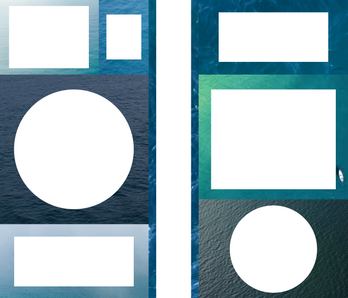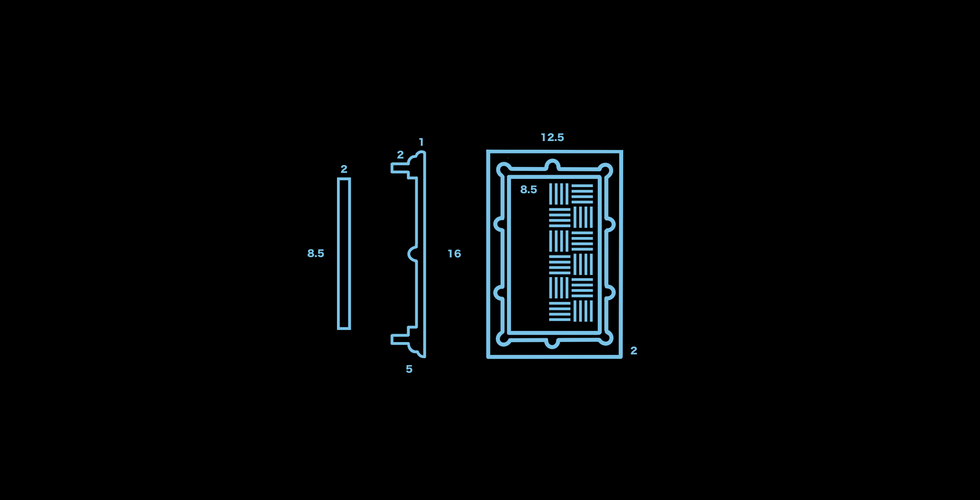Invisible Current - Making
- Zhang Kaixiang

- Mar 19, 2020
- 5 min read

While researching the information about climate change and Greta Thunberg, I began to think about the materials for making the outcome. The idea of the outcome was coming from the experience in Chepstow, once we walked on the riverbank of the River Wye to see the second tide as the local people told us, and I heard the water flow under the manhole cover is roaring. I was surprised that in the world that we could not see, things are running such quick and powerful.

Then I drew a draft of the image of the outcome in my mind. Generally, inspiring by the video project that I did in the collaborative workshop, what I wanted to make is a sound installation, that places the audio player under the manhole covers. I had two plans:
Make a big board that assembles all covers together. Hence, the sounds can be mixed effectively to make some interesting effects.
Place covers as well as sound components separately in a space, so when the viewers are standing in that space, they can hear sounds around them.
Basically, there were three elements in this work:
Sound
Manhole Cover
Container
Therefore, I planned to work out the physical parts first, which were manhole covers and containers.

I brainstormed several possible ways of realising the work and analysed each material's pros and cons.
Tutorial (Open Studio)
In the tutorial with Jennie, we discussed the work I saw in the studio space. A student made a fire hydrant cover by molding it and interestingly he/she placed it to where the original one was.

We talked about this work for a while, and Jennie encouraged me to find the connection between materiality and concept. Which colour, material, and space the work was planning to place are all indispensable to concern. Meanwhile, apart from textual research and thinking, I should go and do something physical as well.
Therefore, I made a mind map for deciding the material.

Jennie suggested me to put the sound players under the actual manhole covers in the collage and then fill it. It reminded me of Susan Philipsz's sound works. However, considering that the video could not actually present the actual sound effect, I did not think that way anymore. Comparing to mold one or purchase an actual one, I decided to use 3D printing because it was easier to control the size and weight.
Container
It was my second time to use 3D print, to make sure the sizes are precise, I need to caculate the dimensions including the container, cover and sound player. It was pretty difficult to consider all of them in the meantime. The first step I did is to draw the entire layout. In my plan, I wanted to design several dividual containers, they can be either placed together as a whole or separately set in different places.
The main point of designing the layout was assuring containers can be put together in different combinations. To achieve this, the side lengths and amount of the containers had to be controlled.

Then the second step was confirming the sizes of the manhole covers and distances to the edges.
I also tried to imagine several themes of the container, such as using AB glue or plaster to create the wave effect on the surface to represent oceans or paint in black to imitate the crude oil, using materials like spray-paint, frosted plastic or cotton to represent smog, or putting all the elements that relate to climate change together. Nevertheless, concerning the effectiveness of reflecting the concept through materiality, I had not decided the final plan yet.
Manhole Cover
To fluently print the covers, I must calculate every dimension as accurately as possible, which also includes the patterns on them.
In the design process, I had to think about the sizes of the audio player as well, because they would be placed in or behind the covers. In the meantime, I started to set about purchasing the players and comparing their sizes. On account of I did not know what kind of device and control many players through Bluetooth at the same time, so the sound player must be SD-card-insertable.
Another thing in this stage was to find reference pictures of the manhole cover. So I went out to take pictures as well as finding images on the internet. I selected some with holes and some not, I thought they would create different sound effects.
After double-checking the data, I put the information into a form that let me and the technician read easier.

Details
Then I sent the data to the technician for model making and then printed out.

These are the covers actual looks. The sizes of two of them were a little bit exceeding the original ones, thanks to the technicians in the wood workshop, they helped me to sand the pieces.
Finally, I used the pictures of these manhole covers to make a poster for my work.

Sound
As for the sound part, it was the most important point in this project. What I wanted to do is a series of sound collages, which had different functions and contents. A major part of the text research was serving for the outcome of the sound collage.
Basically, I hoped that the final work of the sound collages could possess specific functions and also some of the contents can have the movements as water flow.
Anyhow, the resources were coming from what I recorded and the internet.
Sound Recording
Apart from the sound I already got before, I bought a small audio recorder for phone and borrowed a more professional one to record as much as I can.
I was mainly recording the sounds in London and Iceland, focusing on the sounds of water. In addition, I also interviewed people and collected other sounds in the city. Apart fround the sounds I collected in daily life, I also recorded sound tracks from websites. When everything are gathered already, I made a mind map that roughly notes the content of each manhole cover. I tried to build up a web that links every unit together. In addition, the sounds of water (flowing, raining, and bubbling) played as ambient sound in all sound tracks.

In the editing stage, I used Adobe Audition as the main tool and this was the most diffcult part because I had to ensure that the corresponding sounds will be played coherently. Meanwhile, as they were going to be placed in a same space, I tried to cut one sound source into several parts and insert in different tracks; therefore, the sound could have a dynamic movement from one to another.

Container
Before install the work physically, the last step was to make containers that fit these manhole covers. I considered some materials such as plaster, cement, styrofoam and wood. After asking the technicians in workshops, I finally decided to use wood panel. Weng, the technician of the wood workshop suggested me to use MDF, which is made by sawdust and wood residuals.
When the MDF panel arrived, Weng asked me to make a cutting list.

Utilizing the mutual force between panels, the manhole covers were perfectly fit into these containers.

Exhibition Design
I plan to put this work in the offsite show, so I made a layout to demonstrate the way of setting them.




























































































Comments